| |
Perspectives in HIV Drug Resistance
|
| |
| |
Encouraging Dialogue to Meet a Critical Challenge in HIV Care
SELECTED HIGHLIGHTS from the community forum in NYC July 19, 2006 presented by AAHIVM. Moderated by AAHIVM Executive Director Howard Grossman. Sponsored by Boerhinger Engelheim and AAHIVM. Speakers also included Marty Markowitz, John Baxter, Peter Piliero from Boerhinger Ingelheim, and Bonnie Goldman from The Body, who helped conduct the survey.
Reported by Jules Levin
Current HIV Patient Profile
- Patients Today
- More than 1 million patients with HIV in the U.S.
- Patients new to therapy
- Approximately 40,000 new HIV infections occur each year in the United States:
24.1% prevalence of transmitted drug resistant virus in New York between 2003 - 2004
- Treatment-experienced patients
- Approximately 400,000 are using anti-HIV medications:
3 Drug class resistant: 14%*
2 Drug class resistant: 51%*
* D. Richman, et al. The prevalence of antiretroviral drug resistance in the United States. AIDS. 18(10):1393-1401, July 2, 2004.
Types of Testing
Phenotypic
Measures the ability of the virus to grow in various concentrations of antiretroviral drugs
Genotypic
Examines HIV's genetic code and looks for drug resistance mutations that are present
in the viral genes
Virtual phenotype
Gives a prediction of the Phenotype based on Genotype from large modeling database
There should be a Physician-patient dialogue
Since 65% of patients cite their physician as their principal source for HIV drug resistance information,
doctors should be-
- Initiating the resistance dialogue
- Communicating in a language patients can understand
- Explaining the repercussions of unsuppressed virus
- Discussing resistance test results
MODERATOR of forum
Dr. Howard Grossman
Executive Director
American Academy of HIV Medicine
(AAHIVM)
SPEAKER
Dr. Martin Markowitz
Clinical Director, Staff Investigator
Aaron Diamond AIDS Research Center
Aaron Diamond Professor
Rockefeller University
A Brief History of HIV/AIDS
Two Recent Milestones
- 25 years have passed since first HIV/AIDS diagnosis
- 10th Anniversary of Highly Active Antiretroviral
Therapy (HAART)
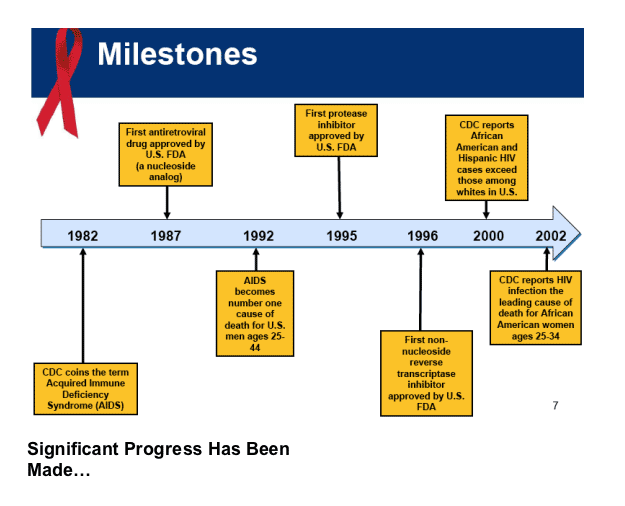
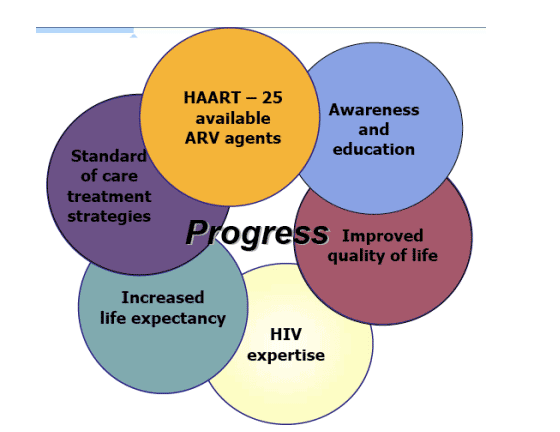
- HIV drug resistance has increased over time and threatens public health
- Increased arsenal of ARV agents = challenges to selecting the optimal treatment regimen and strategy
- Increasing number of treatment-experienced patients
- Limits treatment options
- Defining success for treatment-experienced patients
- Transmission of HIV drug resistant virus
- Compromises treatment options for patients new to therapy
- Need for individualized treatment strategies
- Resistance testing helps identify individual treatment options
- Need for increased awareness and education
Prevalence and Impact of drug resistance
- HIV drug resistance is prevalent in North America
- While recent surveillance data are not available, earlier estimates suggest that 76% of HIV-infected individuals failing treatment in the United States have virus that is resistant to at least one anti-HIV medication
- 24.1% prevalence of transmitted drug resistant virus in New York between 2003 - 2004* (*Shet et al. J Acquir Immune Defic Syndr. Volume 41, Number 4, April 1, 2006)
- Approximately 10% prevalence of multi-drug resistant virus during this time
period
- Impact
- Unsuppressed virus
- Disease progression
- Transmission of drug resistance
- More limited treatment options
Speaker
Dr. Howard Grossman
Executive Director
American Academy of HIV Medicine
(AAHIVM)
THE STUDY
- National Internet-based survey
- 385 HIV-treating physician respondents
- 400 HIV-positive patient respondents
- Fielded between April 10 and May 22, 2006
- Data were collected and analyzed by Harris Interactive in
partnership with the AAHIVM
- Profiles
- Physician
- 94% self-reported HIV/AIDS specialist
- 48% AAHIVM-credentialed HIV/AIDS specialist
- Treat an average of 126 patients per month
- 14 years average treating experience
- Patient
- 64% on three or more treatment regimens
- 83% diagnosed with HIV for five years or more
- 50% on current treatment regimen less than five years
Key Survey Findings
- Disparity in perceptions; share of concern
- More HIV-treating physicians than patients are concerned about HIV drug resistance
- Both physicians and patients agree that genetic barrier to resistance is among one of the most important components of a treatment regimen
- Adherence to guidelines
- Many physicians are comfortable using resistance testing; however, a significant number seek help interpreting results to help guide treatment strategy and decisions
- Closing the knowledge gap
- Knowledge about resistance varies between experienced and less experienced patients. More than half (57%) of patients report they are not very knowledgeable about resistance testing
91% of physicians vs. 54% of patients are "very concerned" about HIV drug resistance
Both physicians and patients agree that genetic barrier to resistance is among the most important attributes in a treatment regimen
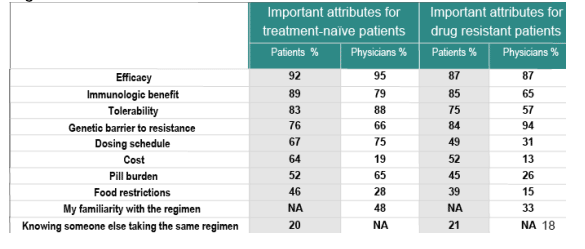
U.S. Department of Health and Human Services (DHHS) Recommendations
Resistance testing is recommended for patients across the spectrum of HIV experience to assist in selecting active drugs when initiating and changing
antiretroviral regimens in cases of virologic failure.
Majority of physicians are using resistance testing to help guide treatment strategy.
48% of physicians are "extremely" or "very" comfortable interpreting the results of resistance tests, and nearly two out of five (39%) seek advice to interpret the results.
Physician Use of Resistance Testing
Only 41% of doctors reported using resistance testing when a patient is first diagnosed & therapy is not initiated. But, resistance testing should be used right away to find out if the patient has transmitted resistance because if you wait a few years to perform a test resistance will become undetectable. And when you begin therapy the resistance can and will re-emerge.
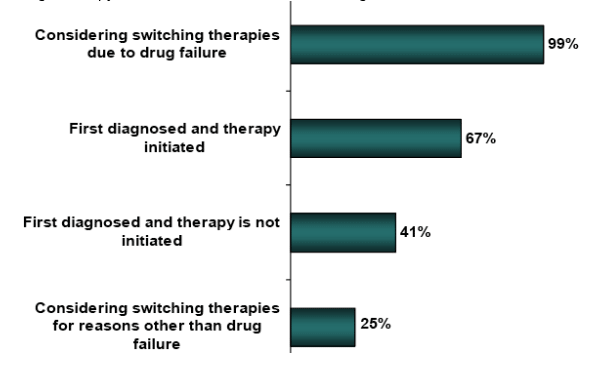
Physicians stay informed about drug
resistance via:
- HIV update meetings: 74%
- Infectious disease/HIV publications: 66%
- Peer-reviewed medical journals: 64%
- Peers: 50%
65% of patients cite their physician as their principal source for HIV drug resistance information
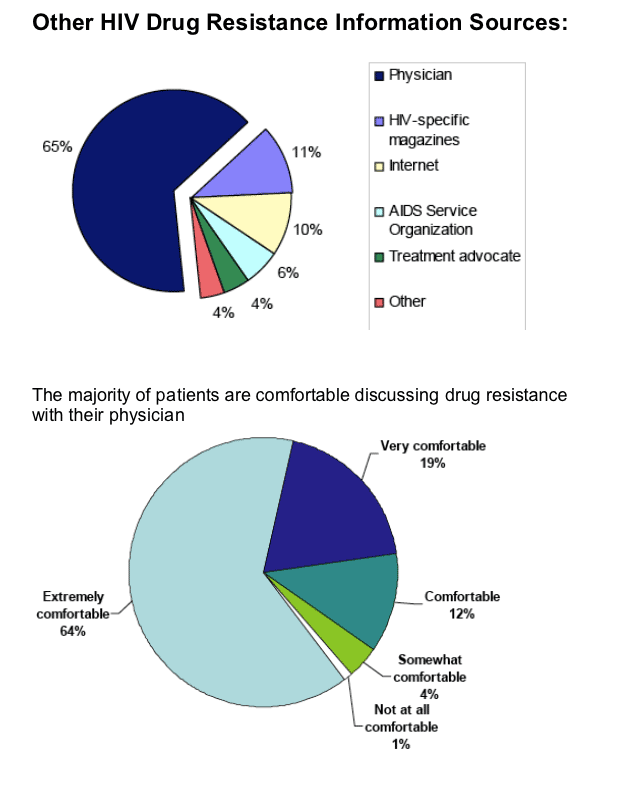
Drug resistance is among the top three most important treatment issues physicians say they should discuss with patients
Key drivers prompt physicians to discuss drug resistance:
Virologic failure
New patient starts
Adherence issues
Knowledge Gap Exists
Patients have a basic understanding of HIV
drug resistance, but their knowledge varies
Experienced patients are more knowledgeable about resistance than patients new to treatment
Patients are not clear about the circumstances under which they should be tested for drug resistance
While virtually all physicians test their patients for HIV drug resistance, many patients say they have not or are not sure if they have been tested
Patients say they have a basic understanding of what
contributes to drug resistance
but
77% of patients say it is difficult to understand
some of the terminology used
and
Useful and usable educational materials are not
always available
only...
One-quarter (23%) of physicians provide educational materials about drug resistance only when asked
And...
More than half (51%) of physicians do not display educational materials about drug resistance in their office
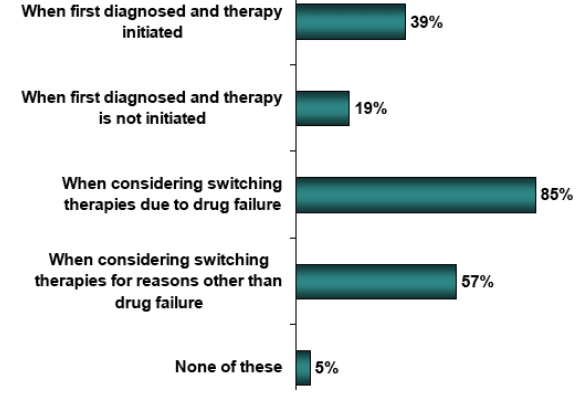
Findings reveal a need for:
Increased awareness of HIV drug resistance, its implications, and use of resistance testing for all individuals living with HIV
Continued physician use of HIV resistance tests
Need for adherence to evolving strategies and possible policies to be developed
Extending surveillance of HIV drug resistance
Earlier and routine patient-physician resistance testing dialogue
Health-literate patient educational tools encouraging physician/patient dialogue
Collaboration with other appropriate organizations
SPEAKER
Dr. John Baxter
Professor of Medicine,
Division of Infectious Diseases
Cooper University Hospital
UMDNJ-Robert Wood Johnson Medical
School
Overview of drug resistance
Anti-HIV drugs are designed to stop HIV from reproducing itself
- HIV reproduces itself at a very rapid rate and often makes mistakes when copying itself - these are called mutations
- Mutations may make HIV less susceptible, or resistant, to anti-HIV drugs - meaning these drugs become less effective or completely ineffective in blocking
reproduction of the virus
Why Does Resistance Develop?
- Poor adherence to treatment regimens leads to suboptimal drug concentrations
- Drug exposure with unsuppressed virus
- Low genetic barrier
- More advanced HIV disease
- Pre-existing transmitted drug-resistant virus
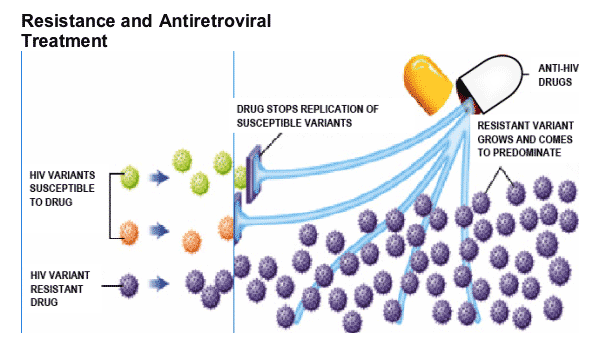
Treatment Priorities
The goal of antiretroviral therapy, as defined byU.S. DHHS treatment guidelines:
- Reduce HIV-related morbidity and mortality
- Maximally and durably suppress viral load
- Restore and preserve immunologic function
- Improve quality of life
In addition to adhering to guidelines, physicians should discuss and evaluate with their patients the appropriate course of therapy for their individual treatment needs
|
|
| |
| |
|
|
|